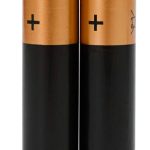The experience of a sudden tire blowout on a busy motorway can indeed be a frightening one. However, if you know how to respond correctly, such an incident becomes much less dangerous. In this article, we will discuss the steps you should take when faced with a tire blowout on a busy UK motorway. We will also outline some tips on how to prevent and prepare for such an eventuality. Keep in mind that your safety and the safety of others on the road are paramount when navigating these situations.
Recognizing a tire blowout
Your first step when dealing with a tire blowout is to recognize what’s happening. Tire blowouts typically happen when there’s a sudden loss of air pressure in the tire, often due to damage or wear.
Have you seen this : Can upgrading the brake calipers improve the emergency stopping capability of your vehicle?
Suddenly, you may notice a loud bang or boom, similar to the sound of a gunshot. This is often followed by a whooshing sound as the air escapes from the tire. Your vehicle may also begin to slow down, no matter how much you press the accelerator.
In addition to these sounds, you may also feel a difference in the handling of your vehicle. If a front tire has blown out, your car will pull towards the side of the damaged tire. If a rear tire has blown out, you may feel the rear of the car swaying from side to side.
In parallel : What is the recommended procedure for inspecting the chassis of a vehicle for corrosion?
Being able to quickly recognize these signs will help you keep control of your vehicle and limit the damage.
Maintaining control after a blowout
Once you’ve identified a tire blowout, it’s important to react in a way that maintains maximum control of your vehicle. Your natural instinct might be to brake hard and suddenly, but this could lead to a loss of control.
Instead, keep a firm grip on the steering wheel and try to keep your vehicle as straight as possible. In order to correct any swaying or pulling, gently steer in the opposite direction. Do not make any sudden movements that could cause the vehicle to skid or flip.
While you’re maintaining your course, begin to decelerate slowly. Let the vehicle slow down naturally rather than slamming on the brakes. Once you’ve decreased your speed safely, you can then signal and move to the side of the road or onto the hard shoulder.
Safety measures post-blowout
Once you’ve pulled over safely, it’s time to assess the situation and take necessary safety measures.
Turn on your hazard warning lights to alert other drivers to your presence. If you have a reflective triangle or other warning device, place it at an appropriate distance behind your vehicle to give other motorists advanced warning of your situation.
If it’s safe to do so, you can attempt to change the tire yourself. However, it’s often safer and more convenient to call for professional help, especially on a busy motorway.
Remember to stay well away from the flow of traffic while you wait for assistance, and avoid walking along the motorway or crossing it on foot.
Preparing for a blowout
Prevention is always better than cure, and there are precautions you can take to minimize the chance of a tire blowout. Regularly check your tire pressure and ensure they are inflated to the manufacturer’s recommended PSI (pounds per square inch).
You should also inspect your tires for wear and tear, and replace them when necessary. Watch out for any objects embedded in your tire, such as nails or shards of glass, as these can cause a blowout.
It’s also a good idea to practice emergency maneuvers in a controlled environment, such as an empty car park, so you know what to do in the event of a real-life blowout.
Handling a tire blowout in the rain
A tire blowout is a dangerous situation in any weather, but it becomes significantly more hazardous when it’s raining. The wet conditions can make it more difficult to control your vehicle and decrease visibility, making it harder for other drivers to see you.
In the event of a blowout during a rainstorm, your reaction should be the same as in dry conditions: maintain control of your vehicle, slow down gradually, and pull over when it’s safe to do so.
Once you’re safely off the road, it’s even more important to make your vehicle visible to other drivers. In addition to your hazard lights, consider using flares or other high-visibility safety equipment if you have them.
Knowing how to handle a tire blowout safely can make all the difference in a potentially dangerous situation. By recognizing the signs of a blowout, maintaining control of your vehicle, taking the right safety measures, preparing in advance, and knowing how to handle a blowout in the rain, you can navigate these situations with confidence and keep yourself and others safe on the road.
Defensive Driving Techniques after a Tire Blowout
The defensive driving techniques learnt at a driving school become essential when dealing with a tire blowout. Defensive driving requires constant awareness of potential hazards, including the vehicles around you, road signs, and any changes in road conditions. It is particularly important during a tire blowout, as it helps you maintain control of your vehicle, react quickly and appropriately to challenging situations, and increase distance from other vehicles to avoid a collision.
Maintain a safe distance, particularly from heavy vehicles. If, for example, imagine you are driving behind a large truck and experience a blowout, if you are too close, it may be more difficult to manoeuvre your vehicle safely away from the truck. This can lead to potentially dangerous situations.
Another key aspect of defensive driving is being aware of the blind spots of other drivers. During a blowout, other drivers may not immediately realise what’s happening and could inadvertently move into your path. By being aware of their blind spots and making an effort to stay out of them, you can reduce the risk of a collision.
Taking the lane changes into account, changing lanes after a tire blowout should be done cautiously. It will be a necessity to move from the lane you are in to the emergency lane safely and as soon as possible. Always indicate your intentions to other drivers and ensure the lane is clear before moving over.
During a blowout, sudden stops should be avoided. In a panic, you might be tempted to slam on the brakes, but sudden braking can worsen the situation. Instead, let your vehicle slow down naturally while maintaining a firm grip on the steering wheel.
Coping with Blowouts in Different Weather Conditions
A tire blowout can be a scary occurrence in any weather, but under certain weather conditions, it can be even more challenging to handle. Whether it’s raining, foggy, windy, or snowing, the weather can have a significant impact on how you respond to a blowout and the driving techniques you employ.
In heavy rain or snow, visibility is often reduced, and the road surface can become slippery, making vehicle control more tricky. In such weather conditions, turning on your headlights, slowing down, and maintaining a larger distance between your vehicle and others is essential.
Windy conditions may cause your vehicle to sway or skid, especially after a blowout. It’s crucial to reduce your speed and keep a firmer grip on the steering wheel to counteract the effects of the wind.
In foggy conditions, visibility becomes a significant issue. If a blowout occurs, switch on your fog lights or low-beam headlights to ensure other road users can see you. Remember, it’s not just about you seeing other vehicles; it’s also about them seeing you.
Conclusion
Handling a tire blowout on a busy UK motorway is a daunting prospect, but with the right knowledge and preparation, it’s possible to navigate such an event safely. By recognising the signs of a tire blowout, employing defensive driving techniques, maintaining a safe distance from others, and adjusting your actions based on weather conditions, you can ensure your own safety and that of other road users.
Remember, prevention is always better than cure. Regular checks on tyre pressure and condition can help you avoid blowouts in the first place. And, finally, the lessons learnt at a driving school or from this original blog can provide you with the necessary skills and confidence to deal with a tire blowout effectively. Stay safe on the roads, and happy driving.











